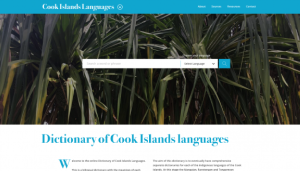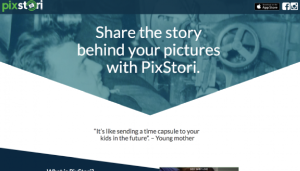General Interest
Back to Top
|
 |
|
Hollow: An Interactive Documentary
|
Social studies |
|
In the 1950s, McDowell County, West Virginia had a population of 100,000. A national center for coal mining, this area of the county attracted politicians like Harry Truman and John Kennedy and was home to the famous "Rocket Boys" who won the 1960 National Science Fair. In 2010, the population of McDowell County was just over 22,000. In the second half of the twentieth century, the county lost tens of thousands of jobs in the coal industry, and the county-wide poverty rate reached 37.7% in 1990. This interactive, online documentary directed by Elaine McMillion Sheldon (a filmmaker and West Virginia native whose most recent documentary is Herion(e)), explores the history and future of McDowell County through the stories and voices of its current residents. Hollow is divided into five sections, each examining a different aspect of McDowell County. Visitors are invited to click on images to learn more about a particular photograph or document and are also invited watch shorter, embedded videos, which include historical footage and interviews with residents. These interviews feature residents of all ages - from children to senior citizens - describing their daily experiences and reflections regarding how the county has changed and their hopes for the future. [MMB] |
|





|
|
 |
|
Bureau of Land Management Library
|
Science |
|
This digital archive is home to over 6,000 digitized publications from the U.S. Bureau of Land Management (BLM) and includes resource guides, data collections, histories, official reports, land management studies, and much more. This eclectic collection of materials, which includes items dating from 1885 through 2017, provides insight into the history of the BLM and may appeal broadly to those interested in wildlife and ecology, as well as those interested in history. Included in this collection are a 1991 report of, "Archaeological excavations at the Yarmony Pit House site, Eagle County, Colorado;" a 1992 pamphlet regarding reptiles and amphibians that one might encounter in central Nevada; and a 1985, "Photographic guide for aging nestling ferruginous hawks." This collection can be browsed by year as well as by topic/subject. [MMB] |
|





|
|
 |
|
 |
|
Sound Matters
|
Science |
|
Sound Matters is a new podcast dedicated to the science, history, and art of sound. The podcast is hosted by Tim Hinman, an artist and a producer for Danish National Radio. In each thirty-minute podcast, Hinman explores one aspect relating to sound and how we listen to it. For example, in Episode #15, In Search of the Missing Sound, Hinman explores the history of devices that record sound and the quest to find, "the mythical perfect audio experience." Episode #10, which is entitled Sounds from Outer Space, features a conversation with Tim O'Brien of the Jodrell Bank Observatory in the UK and "amateur radio satellite enthusiast" Dave Rowntree about whether or not it is really quiet in outer space. Visitors can listen to all episodes of this podcast via a link to Soundcloud on this website. Interested listeners may also subscribe via iTunes. [MMB] |
|





|
|
 |
|
80s.NYC
|
Social studies |
|
80s.NYC is an interactive map created by Brandon Liu and Jeremy Lechtzin that makes use of a unique source: photographs taken by New York City's Department of Finance in order to access the property value of buildings in the city. Today, these photographs, which are freely available via the city's online Municipal Archives, document what the city looked like three decades ago. On this website, visitors are invited to browse a number of photographs through an interactive map. Best of all, many of these photographs are accompanied by short stories that provide context and history. For example, one photograph captures J&R Music World: "the place to go to buy L.P.s, cassettes, and, starting in the 80s, CDs." Another photograph features four photographs depicting a street corner that plays a role in Tom Wolfe's novel The Bonfire of the Vanities. |
|





|
|
 |
|
Art Institute of Chicago: Children
|
Arts |
|
The Art Institute of Chicago is home to a number of photographs, portraits, prints, and more that feature images of children. This themed online collection features 64 digitized artworks created by many different artists. These works include Joshua Johnson's early-nineteenth-century portrait Mrs. Andrew Bedford Bankson and Son, Gunning Bedford Bankson, Mary Cassatt's The Child's Bath and Young Mother, and Sally Mann's photograph Holding Virginia. Other works include Konrad Lueg's 1967 screen print Babies, from Capitalist Realism, an early-nineteenth-century French furnishing fabric entitled Children and Pets, and Maggie Carson's Sunbonnet Sue Quilt. By putting these diverse pieces in conversation with one another, this online collection invites reflection about how perceptions and portrayals of childhood vary across time, space, and culture. [MMB] |
|





|
|
 |
|
Isabel de Giberne Sieveking: A Conventional Radical
|
Social studies |
|
Isabel de Giberne Sieveking (1857-1936) was a British writer and women's suffrage activist. She lived a life that challenged many contemporary conceptions about gender roles and sexuality during the late-nineteenth and early-twentieth-century. University of Indiana Ph.D. candidate Miranda Wojciechowski has created this fascinating online exhibit dedicated to Sieveking's life and work. Drawing on the archival material held at the University of Indiana's Lilly Library, Wojciechowski offers a glimpse into the life and perspectives of Sieveking. As these archives reveal, Sieveking was raised with both Catholic and feminist ideals, both of which and she continued to value into her adult life. In particular, her views on marriage challenged common views on the topic in Edwardian Britain. Sieveking argued that women should be careful not to idealize marriage and, in her 1913 essay, "The Celibate Englishwoman," warned that marriage to the wrong individual could "only hinder women's individual development, and stunt her faculties." In addition, Sieveking, a mother herself, deeply valued motherhood and championed education for women so that they would have the skills to raise children. To learn more about Sieveking, check out the full exhibit. [MMB] |
|





|
|
 |
|
The Toronto Star: 125 years of Star photography
|
Arts |
|
This year the Toronto Star celebrates its 125th anniversary and presents this online exhibit entitled, "25 photos worth remembering." Photographs range from May 31, 1900, featuring a view of Toronto citizens celebrating Britain gaining control of Pretoria, South Africa during the Second Boer War, to February 25, 2010, featuring a shot of Haley Irwin and Meghan Agosta enjoying a beer while lying on the ice after Team Canada's 2010 Olympic hockey victory over Team USA. The images present high points and low points in Toronto and Canadian history. Other photographs feature visits from Queen Elizabeth and Princess Diana; the Stanley Cup, won by the Maple Leafs in 1967, and other sports victories; John Lennon and Yoko Ono; and the CN Tower under construction. There are also lots of images of fires, snow storms, and other natural disasters, such as the worst snowstorm ever to hit Toronto in December 1944, which overturned a streetcar. [DS] |
|





|
|
























